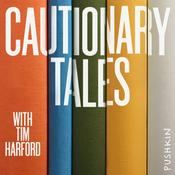8 episodes

Introducing, "The Sports Moment"
7/24/2024 | 0 mins.
Ava Wallace, sports reporter at The Washington Post, is in France to report on the Summer Games — and eat a lot of croissants. Join her through the entire run of the games, for several episodes a week as she captures the highs, the lows and the Paris of it all, along with other Post colleagues.Follow The Sports Moment podcast on Apple Podcasts, Spotify, Amazon Music or YouTube.Sign up for The Sports Moment: Olympics Edition newsletter here.

Introducing “The Empty Grave of Comrade Bishop”
10/17/2023 | 3 mins.
Grenada’s Black revolutionary leader, Maurice Bishop, was executed in a coup in 1983, along with seven others. The whereabouts of their remains are unknown. Now, The Washington Post’s Martine Powers uncovers new answers about how the U.S. fits into this 40-year-old Caribbean mystery.“The Empty Grave of Comrade Bishop” is an investigative podcast that delves into the revolutionary history of Grenada, why the missing remains still matter and the role the U.S. government played in shaping the fate of the island nation. Listen and follow the show here.

Gates of the Arctic National Park
7/19/2023 | 1h 1 mins.
Established in 1980, Gates of the Arctic marked a radically different way of thinking about what a national park should be. Compared to previously established parks, it’s hard for the public to access. This park is truly undeveloped — there are no roads or infrastructure. And it’s immense. You could fit Yosemite, Glacier, Everglades, White Sands, Death Valley and the Grand Canyon all within its borders and still have room to spare.But even here, in one of the most remote and least visited of the national parks, the outside world is finding its way in. Ten miles west of the park, mining companies are drilling for copper. The metal is necessary for a number of green technologies, including electric vehicles, solar panels and wind turbines. The mines could support President Biden’s goals to reduce the use of fossil fuels and beef up domestic sources of critical minerals. To access these mines, the state has proposed an access road that would cut through 211 miles of Arctic tundra. Twenty-six miles of the road would cross through Gates of the Arctic. Biden has pledged to conserve nearly a third of U.S. land and water by 2030, and his administration has stopped similar mining projects. Environmentalists and some Native groups are also fighting to have the wilderness preserved.In this episode of “Field Trip,” Washington post reporter Lillian Cunningham travels north of the Arctic Circle to ask: Is the dent these metals would put in climate change worth the harm to the surrounding wilderness? We have incredible photos for this series. You can see them and find more on the National Parks here. “Field Trip” would not have been possible without the support of Washington Post subscribers. If you’re not yet a subscriber, you can unlock a special deal as a listener to this series. Your first four weeks are free when you sign up here.

White Sands National Park
7/12/2023 | 1h
White Sands National Park contains a geological rarity: the largest field of gypsum sand dunes anywhere on earth. The blinding white dunes stretch for miles in every direction, dazzling tourists, inviting selfies and sled rides. But there’s much more to this park than meets the eye. White Sands National Park, one of the newest in the system, is embedded within White Sands Missile Range, the largest military installation in the country. Today the missile range is a testing ground for cutting-edge weapons. It’s also home to the Trinity site, where the first test of an atomic bomb was conducted in 1945. In that instant, the sand beneath the bomb fused into greenish glass. And life changed forever for people living in communities nearby.That same sand also holds evidence of humanity’s origins on this continent. One observant park ranger at White Sands National Park has spent years uncovering footprints delicately preserved in the shifting sand. Those tracks have painted a picture of prehistoric families living alongside mammoths and giant ground sloths. They’ve also raised new questions about just how long ago the first people might have crossed into North America.In this episode of “Field Trip,” Washington post reporter Lillian Cunningham visits these two very different sites in the New Mexico desert and asks why this landscape has been both safeguarded and sacrificed.We have incredible photos for this series. You can see them and find more on the National Parks here. “Field Trip” would not have been possible without the support of Washington Post subscribers. If you’re not yet a subscriber, you can unlock a special deal as a listener to this series. Your first four weeks are free when you sign up here.

Everglades National Park
7/05/2023 | 1h 4 mins.
Many people mistake the landscape of Everglades National Park for a swamp, full of mosquitos and razor-sharp sawgrass. Technically it’s a wetland, home to a stunning array of wildlife and beloved by visitors and conservationists alike. But that view of the Everglades as a treacherous and hostile place informed more than a century of efforts to tame and transform the landscape in ways that are still playing out today.In this episode of “Field Trip,” Washington Post reporter Lillian Cunningham tells the story of how the water flow through South Florida was radically altered to make the region more habitable for people. Then, how that unintentionally disrupted one of the country’s most important ecosystems. And finally, why we’re racing to unravel those mistakes today. We’ll meet Jerry Lorenz, an Audubon Society scientist who’s spent more than three decades trying to protect his beloved roseate spoonbills and other species of birds. We’ll journey by fan boat across the marshes with Houston Cypress, a member of the Otter Clan in the Miccosukee Tribe of Indians of Florida and an advocate for Everglades restoration, and Durante Blais-Billie, an environmental and Indigenous rights advocate from the Seminole Tribe of Florida. We’ll learn about the legacy of environmentalist Marjory Stoneman Douglas and how groups like the National Parks Conservation Association and the Captains for Clean Water are following in her footsteps today.And we’ll hear from Eva Velez of the U.S. Army Corps of Engineers about what went wrong originally and what it now means to approach engineering “with nature.” We have incredible photos for this series. You can see them and find more on the National Parks here. “Field Trip” would not have been possible without the support of Washington Post subscribers. If you’re not yet a subscriber, you can unlock a special deal as a listener to this series. Your first four weeks are free when you sign up here.
More History podcasts
Trending History podcasts
About Field Trip
Listen to Field Trip, Dan Carlin's Hardcore History and many other podcasts from around the world with the radio.net app

Get the free radio.net app
- Stations and podcasts to bookmark
- Stream via Wi-Fi or Bluetooth
- Supports Carplay & Android Auto
- Many other app features
Get the free radio.net app
- Stations and podcasts to bookmark
- Stream via Wi-Fi or Bluetooth
- Supports Carplay & Android Auto
- Many other app features


Field Trip
download the app,
start listening.








































